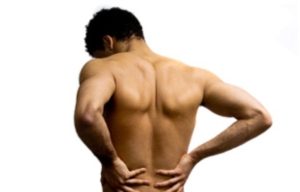Understanding Pain
Updated:
For optimal recovery following injury, it is important to address any factors which may impact the recovery process. Whilst most injuries are caused by physical forces, such as trauma or overuse, other social, biological, cultural, environmental and psychological factors such as the way we think about our injuries can play a significant role in accelerating or impeding our recovery, sensitising or desensitising our nervous system and moderating the degree of suffering and pain experienced due to injury.
In this article, we explore pain and some bio-psycho-social strategies that may be utilised to assist with achieving an optimal outcome following injury.

What is Pain?
Pain can be defined as an unpleasant sensory or emotional experience associated with actual or potential tissue damage. Pain, whilst unpleasant can be extremely useful, keeping us safe and guiding our choices to prevent injury (i.e. a lack of pain lets us know it’s ok to touch a warm stove, but touching a hot stove, burning your skin and causing pain, may not be such a good idea). Pain is also a very useful guide to choosing appropriate activity levels following injury (i.e. for most injuries, it is generally appropriate to participate in levels of activity that do not cause an increase in pain), therefore preventing further tissue damage and allowing the natural healing process to take place.
However sometimes, particularly in the case of chronic injuries, pain experienced by an individual may be less about tissue damage and more about the sensitivity of the nervous system. One example of pain experienced in the absence of tissue damage includes those phantom limb pains experienced by amputees whereby ongoing pain is experienced in the amputated limb days, months or years following the amputation (clearly in the absence of further tissue damage). Whilst this is an extreme example, a very similar physiological process can occur in many individuals with common injuries that persist beyond normal healing times. In fact, it is estimated that around 1 in 4 individuals has a chronic pain state that defies tissue healing times.
Not only is it possible to have pain without tissue damage (e.g. in the phantom limb pain example described above), but it is also possible to have tissue damage without pain. For example there are many reports of soldiers in wartime having extensive injuries to their limbs, but yet are able to rescue their injured comrade without noticing any pain of their own injury. Another example is the person who goes back into the burning house to save a loved one without noticing the pain from the extensive burns to their feet.
Recent research utilising MRI scanning has further expanded our understanding of pain. We now know that many areas of the brain (up to 400 areas) are active simultaneously when an individual experiences pain and that this pain pattern varies between individuals. Areas of the brain previously thought to be uninvolved in pain, such as those areas responsible for processing smell, taste, sound, vision etc., are often activated during a pain response. We also know that 100% of pain is created by the brain and that negative emotions, such as stress, anxiety, depression, anger, fear etc., can directly stimulate pain pathways.
The sensitive nervous system
Certain social, biological, cultural, environmental and psychological factors may act to sensitise the nervous system (brain, spinal cord and associated nerves) so that pain signals may be experienced as more painful than they would normally be (i.e. hyperalgesia) and normal sensations (such as tissue stretching or compression) may be perceived as painful (i.e. allodynia). Collectively these bio-psycho-social factors that sensitise the nervous system may be broadly categorised as ‘danger’ signals. These factors may act in isolation or combination causing individuals to experience greater degrees of pain than they would otherwise. There are many potential factors which may act as danger signals, with significant variation between individuals. As a general rule, a factor can only be a danger signal if it is perceived to be so by an individual. Some examples of potential danger signals may include:
- Hearing about a friend who had a similar injury and had a poor outcome.
- Poor social support (such as social isolation or not seeing friends anymore).
- An unsupportive partner who thinks you should just snap out of it.
- Financial stress (such as loss of a job / interest rate rises / bills coming in etc.).
- Negative self-talk, for example: ‘This will never get better’, ‘My injury will never be 100%’, ‘It feels like a knife in there’, ‘I’ve already had this injury for 3 months, what if this never gets better’, ‘My back is stuffed’, ‘My neck is killing me’.
- Hearing comments or opinions relating to your condition, such as ‘Oh no, that is horrible’, ‘How are you going to cope?’, ‘That swollen ankle looks terrible’ or ‘You poor thing – my friend had a similar condition and it was really debilitating and still isn’t right!’.
- Poor general health (such as coming down with the flu or even a feeling like you are coming down with something).
- Your insurance company stopping payment for treatment.
- Your doctor being worried about your pain and suggesting you see a surgeon.
- Work place pressure (such as a non-supportive boss).
- Any other experiences or thoughts causing negative emotions such as stress, anger, fear, anxiety, depression.
In contrast, other bio-psycho-social factors may act to desensitise the nervous system and counteract ‘danger’ signals so that pain signals may be experienced as less painful than they may otherwise be. Collectively, these factors may be broadly categorised as ‘safety’ signals. There are many potential factors which may act as safety signals with marked variation between individuals. Factors can only act as safety signals if they are perceived to be so by an individual. Some potential examples of safety signals may include:
- Hearing about an athlete who had a similar injury with a fantastic recovery and is back to performing better than ever.
- Your doctor reassuring you ‘you are on the right track, keep up the great work’.
- A supportive social circle, such as regularly seeing friends who you enjoy catching up with, who make you laugh, are understanding and positive.
- You realise your family is supportive and committed to your wellbeing.
- A trusted friend recommends a fantastic physiotherapist who has worked wonders for them in the past.
- Your trusted physiotherapist sees your significantly swollen ankle and tells you ‘fantastic, all that swelling is a wonderful inflammatory response – you’re a great healer’.
- Positive self-talk, such as ‘I’m on the right track, I just have to keep positive and be patient’, ‘I know this will get better, I’ve already noticed significant improvements’, ‘I’m in control, I just have to follow my rehabilitation program, be optimistic, listen to my body and gradually build up my activity’.
- Hearing reassuring comments, such as ‘You’re looking fit’, ‘Wow you’re already back in the gym’, ‘Your walking looks much better’, or ‘You’re moving so much more freely’.
- Your boss being committed to finding the best solution for you at work so you can keep contributing whilst allowing your injury to quickly recover.
- Participating in activities or hobbies you love, such as catching up with a close friend, doing some painting, listing to your favourite music, playing an instrument reading an inspiring book, meditating, or being resilient and malleable and finding appropriate alternative activities to enjoy.
- Any other experience making you feel good, happy, peaceful, or causing you to laugh.
Danger / safety signal balance
The balance between the number and type of danger and safety signals present in an individual’s life can directly influence whether pain is experienced in a given situation and the severity of the pain experience. For example, a patient with whiplash from a car accident may experience more neck pain after having an argument with their partner, hearing about a friend whose neck whiplash never resolved and driving their car through the intersection where the original incident took place. In contrast, the same patient with whiplash from a car accident may experience little or no neck pain when driving their car on a beautiful sunny day, listening to their favourite music, with a close friend as a passenger who has just told them a great joke and they are both having a belly laugh.
Subsequently, to help desensitise your nervous system it is useful to:
- Identify any danger signals that may be present in your life and use your resourcefulness to remove these.
- Find safety signals in your life and try to surround yourself with these.
- Find ways to transform danger signals into safety signals.
- Consider aspects of your life such as changing your language (particularly your self-talk and things you say), your beliefs, things you do, places you go, people you see and experiences you have.
Remember that the brain is bioplastic (capable of physical and biological change). This means that factors that have caused sensitisation of the nervous system are reversible – we simply have to train the brain (like a muscle) and exercise alternative neural pathways by finding more safety signals and less danger signals in your life.
The role of attention in pain
Another factor to consider in the overall pain pattern is the influence of attention on a pain experience. We all know that in order to experience pain, we have to be conscious. For example, we don’t experience pain when we are asleep or under anaesthetic (such as during surgery). The converse can also be true – the more conscious and aware we are of an injury (i.e. the more we pay attention to it or think about it), the better our brain becomes at picking up signals in that injured area, sensitising the nervous system and increasing our pain experience. Subsequently, it is generally not productive to excessively monitor, think or talk about an injury.
The opposite extreme of the attention spectrum is also not useful, i.e. patients who ignore their pain (giving it no attention) and work or exercise through pain (such as adopting a ‘no pain no gain’ attitude) typically cause ongoing tissue damage and may slow healing or prevent healing altogether.
Subsequently, a more balanced approach is required to allow tissue healing whilst preventing excessive attention (and potential nervous system sensitisation). This should generally entail listening to your body and responding appropriately when required (for example when you have overdone it and your condition is overall worse as a result) and then giving yourself some mental space by ensuring it is not on your mind at other times. Every significant flare up of your condition is an opportunity to learn how much activity is appropriate for your condition and then use this information moving forwards. If you find you are thinking about your injury excessively, practise instead focusing your full attention on whatever you are doing or perhaps other sensations in your body (be curious in your exploration and pay full attention to your other senses – such as what you can hear, see, smell or taste, the feeling of breath coming into and leaving your body, the feeling of your feet touching the ground with each step or the sensation of water on your skin as you wash your hands etc.). Another strategy is to participate in activities you love that can be happy distractions.
Understanding Pain – Hurt vs. Harm

Members Only ContentBecome a PhysioAdvisor Member to gain full access to this exclusive content. For more details see Become a Member. Already a member? Login Now
Natural Pain Relief

Members Only ContentBecome a PhysioAdvisor Member to gain full access to this exclusive content. For more details see Become a Member. Already a member? Login Now
Strategies to reduce pain and suffering
Things to avoid
- Catastrophizing – try to avoid thinking about potential worst case scenarios (that almost never happen) or that your injury is worse than it is in reality. Catastrophizing about an injury can act to sensitise the nervous system and increase the degree of suffering experienced. Instead, get a professional opinion on your prognosis and honestly confront the facts of your current situation (e.g. I have an injury, it will get better, it’s normal to feel what I’m feeling, I just have to follow my rehabilitation program, stay positive and be patient). Pay attention to your thoughts and things you say and carefully select your language to avoid catastrophizing. Try to avoid negative self-talk or saying things like ‘This will never get better’, ‘I have a great pain tolerance, but this feels like a 12/10 pain’, ‘It feels like a knife in my back’, ‘My bloody knee is killing me’.
- Denial or emotional repression – If you feel sad about having to miss some of your favourite sport or activity be sad and allow yourself to feel that way. Avoid suppressing or burying your feelings which are likely to linger just below the surface and interfere with your recovery – remember feeling is healing!
- Resisting what is – mentally resisting your current situation (e.g. the fact you have an injury, are experiencing discomfort, are temporarily out of action etc.) or wishing it never happened doesn’t change the fact that it has. Being ‘here’ and wanting to be ‘there’ creates stress, increased muscle tension and suffering. Experiment with letting go of conscious or subconscious resistance and allowing things to be. Remember what you resist persists.
- Fear avoidance – some studies suggest that pain related fear is more disabling than pain itself. Don’t be scared of building up your activity levels, getting back to work, or returning to activity. Instead, follow your physiotherapist’s instructions and aim to gradually build up your activity levels over time. Adopting small incremental increases in activity (as guided by your physiotherapist and in line with tissue healing times) is a safe way to re-condition your body to movement with little or no risk of significant injury exacerbation. Try to clear your mind, and let go of any negative expectation about how your body might react. Enjoy the process of healing, re-building your strength and getting back to movement. And remember – slow and steady wins the race.
- Overthinking it – whilst injuries certainly can cause physical pain, the majority of emotional pain and suffering is usually caused by our thoughts about a situation rather than the situation itself e.g. ‘I wish I didn’t have this back pain’, ‘If only I didn’t lift the kids and hurt myself’, ‘How am I going to get back to work’ etc. Thinking about or replaying future or past scenarios allows us to relive them over and over again and feel the emotions associated with them. Practise watching your thoughts non-judgementally and try to recognise when ‘the thoughts I am thinking right now are creating my suffering’. Try to completely accept your current reality and only think about your injury when required to deal with the practical aspects of your rehabilitation, and then clear your mind and focus your full attention elsewhere.
- Creating an identity out of your injury – some studies suggest that patients who receive a diagnosis, recover slower than those who do not. Perhaps this is because they create an identity for themselves out of their injury i.e. ‘I am Joe Bloggs and I have a disc bulge’. This identification with their injury as part of who they are often persists even once the injury has fully recovered. Try to see your injury as a temporary state of healing and allow yourself to let go of any identification with your injury once you have completed your rehabilitation.
Other Useful Strategies
- Pacing – If you have to perform repetitive or prolonged activity that is likely to exacerbate your condition, try instead breaking the activity up into smaller sections that do not aggravate your condition. Ensure your recovery periods are regular enough and long enough to prevent exacerbation and that your recovery periods are spent in appropriate positions or doing appropriate alternative activities, therefore allowing you to complete your activity without a setback.
- Acceptance – Try to completely accept your current reality whatever it entails. Yes you may be injured, yes you may be temporarily out of action, but non-acceptance simply creates more unnecessary suffering and muscle tension by resisting what is. Say ‘yes’ to your current situation rather than the habitual ‘no’ and take positive steps to enhance your recovery.
- Take an active part in your recovery process – listen to your physiotherapist, be patient, realistic and follow instructions to the letter. If you are an athlete, be resilient and apply your training skills and discipline to your rehabilitation. If you are able to participate in some of your work duties or practise drills for your sport (without exacerbating your condition and as guided by your physiotherapist), do so. Celebrate each step forward in the rehabilitation process no matter how small and spend a few minutes each day visualising your body healing (even down to the cellular level) and gradually returning to movement and activity. You can also use this time to mentally practise sporting skills, returning to work or other activities. In your mind’s eye, imagine you are performing your activities flawlessly, with ease and with your body feeling great – this will help to keep neuromuscular pathways active reducing any loss of skills whilst simultaneously helping to desensitise the nervous system.
- Practise mindfulness – focusing your full attention on the present moment whilst calmly acknowledging and accepting any thoughts, feelings and sensations is a fantastic tool to create immediate peace, reduce or eliminate suffering and reduce muscle tension, therefore facilitating recovery. We have all experienced the peace and happiness of mindful moments whenever we completely direct our attention to anything in the present moment, often things we love (for example watching a beautiful sunset, playing your favourite sport, listening to your favourite music etc.). Strengthen your mindful muscles formally by using mindfulness apps such as ‘smiling mind’ or ‘headspace’, practising meditation or relaxation techniques (without falling asleep) or informally by focusing your full attention on whatever the present moment entails and simply being conscious without judgement of sensations, thoughts and feelings. Research has shown that individuals are happier when their full attention is immersed in the present moment rather than thinking about happy or sad thoughts (in the past or future).
- Deep breathing – practising deep breathing exercises (often in conjunction with mindfulness techniques or meditation) has the added benefit of directly stimulating the vagus nerve (or parasympathetic nervous system which is responsible for calming the body i.e. opposite to the fight or flight response) via the diaphragm. This therefore can help to reduce muscle tension and subsequent pain.
- Stay positive no matter what – although this may be difficult, try to keep a positive, optimistic attitude and outlook no matter what. This can help to significantly reduce the emotional pain and suffering associated with injury. Remember that nothing good ever comes from negativity.
- Be resilient and adaptable – participating in activities you love, make you happy or laugh is a great way to calm the nervous system and reduce pain signals. If you can’t participate in the things you normally love doing (e.g. going for a walk, playing your favourite sport etc.), be adaptable and find alternative activities to enjoy (whether new or old) or find ways to enjoy things you can do. Stay connected socially and seek out support of friends, family, team mates etc. rather than social isolation.
- Adopt a healthy lifestyle – excessive sitting or inactivity, poor nutrition, smoking, excessive alcohol use, or being overweight can contribute to a sensitised nervous system and increased stresses on the body. Identify if any issues may exist and take proactive steps as part of your recovery.
- Aim to be the best version of yourself – even if you are injured or experiencing marked, persistent discomfort, aim to try to be the best version of yourself throughout your recovery starting right now.
- Get Professional help – if you are not coping, feel depressed for an extended period of time, have noticed your sleep or eating habits have changed and/or are having suicidal thoughts, seek professional help via a psychologist or counselor immediately. Being proactive and having the courage to seek professional help from someone when you are not coping who can advise on evidence based strategies to help you to feel great again is a sign of strength not weakness!
In summary pain (particularly chronic pain that defies tissue healing times) can be complex, but when looked at from a broad biopsychosocial perspective offers many opportunities to positively impact the recovery process, desensitise the nervous system, retrain the brain and minimise pain and suffering experienced due to injury.
 Recommended Reading
Recommended Reading
- View our Injury Diagnosis Guides
- View our Sports Injury Diagnosis Guides
- View detailed information about common Physiotherapy Injuries.
- Learn about a variety of Physiotherapy Health topics
- Learn about a variety of Physiotherapy Exercises designed to achieve your fitness and rehabilitation goals.
 Physiotherapy Products
Physiotherapy Products
Purchase physiotherapist recommended products to assist with pain relief or injury rehabilitation online at the PhysioAdvisor Shop.
 Find a Physio
Find a Physio
Find a physiotherapist in your local area who can assist with injury diagnosis and treatment, understanding pain and advising on appropriate pain management strategies.
Become a PhysioAdvisor Member

Link to this Page
If you would like to link to this article on your website, simply copy the code below and add it to your page:
<a href="https://physioadvisor.com.au/health/injury-rehabilitation/understanding-pain”>Understanding Pain – PhysioAdvisor.com</a><br/>PhysioAdvisor offers detailed physiotherapy information on pain and some bio-psycho-social strategies to reduce pain and suffering particularly associated with chronic injuries.
Return to the top of Understanding Pain.







